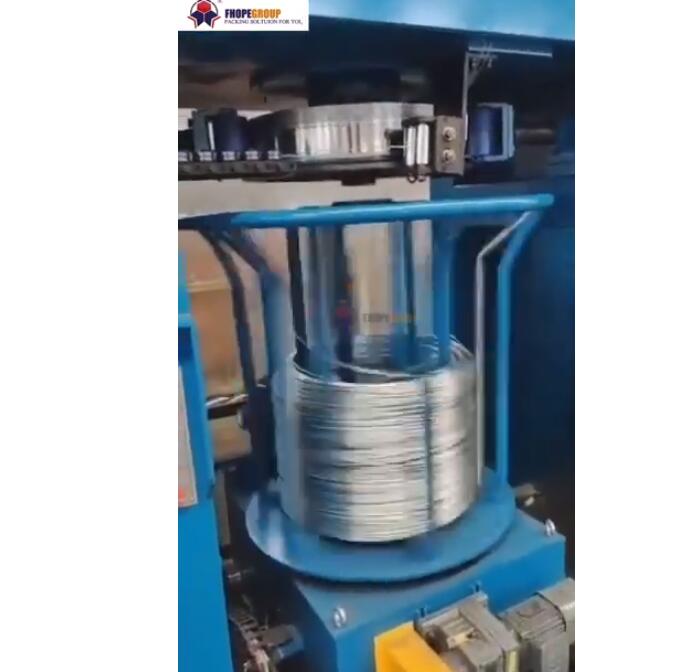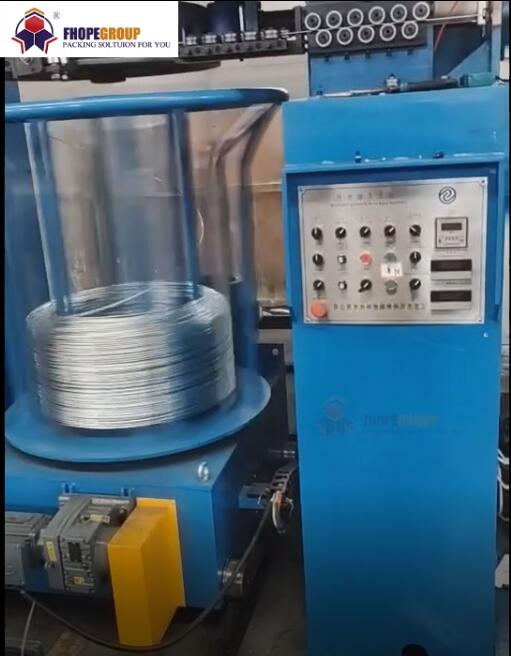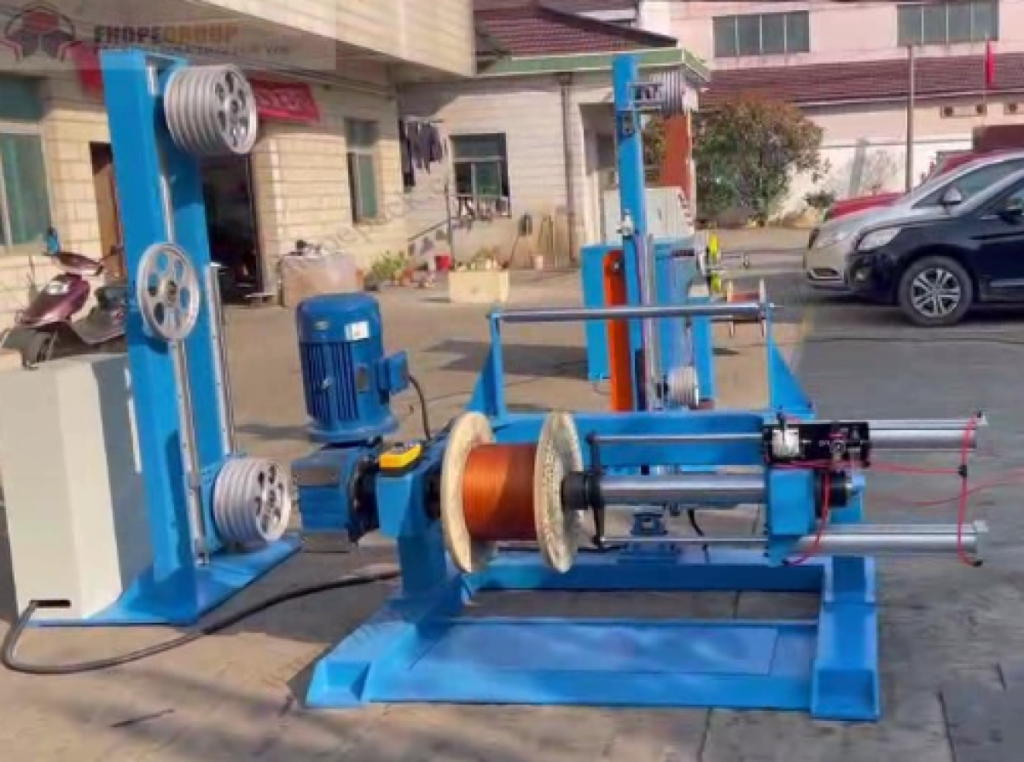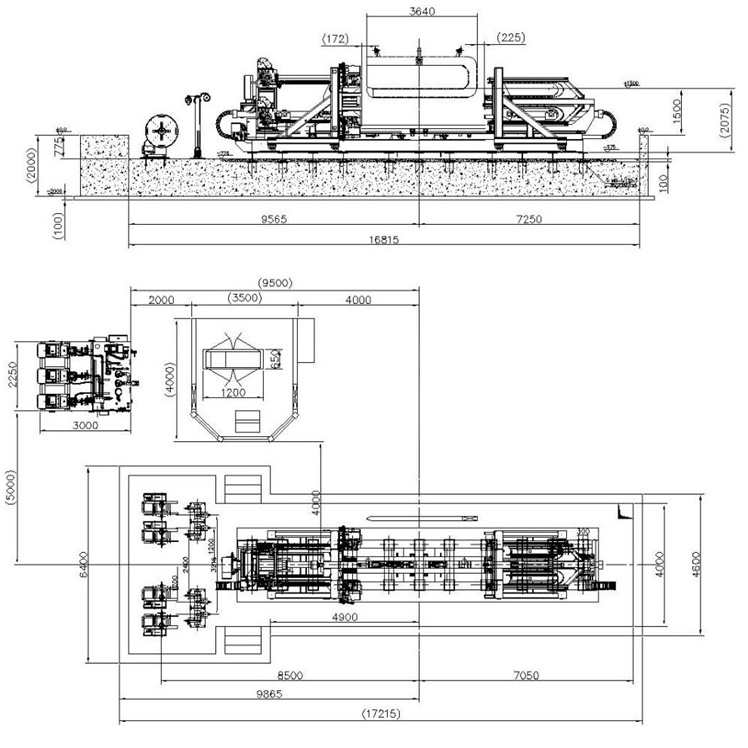Advanced Automation in Wire Processing: The Automatic Steel Wire Coil Winding and Strapping Machine
The efficient handling and packaging of steel wire coils represent a significant operational challenge in numerous industries, from construction and manufacturing to energy and telecommunications. Manual or semi-automated processes often struggle to keep pace with production demands, introduce inconsistencies, and pose potential ergonomic risks. Addressing these challenges requires sophisticated automation, exemplified by the Automatic Steel Wire Coil Winding and Strapping Machine. This technology integrates precision engineering with robust control systems to deliver substantial improvements in productivity, quality, and safety.
Operational Principles and Technological Integration

This automated system executes a seamless sequence of operations, transforming continuous steel wire into securely packaged coils ready for storage or shipment. Key technological aspects include:
1. Precision Winding Mechanism
The core of the machine lies in its ability to wind wire accurately and consistently. Advanced systems often incorporate:
- Tension Control: Sophisticated dancers or electronic feedback loops maintain consistent wire tension throughout the winding process. As highlighted in studies published in journals like Wire Journal International, precise tension control is critical for preventing wire deformation and ensuring uniform coil density.
- Traverse System: Programmable traverse guides ensure level and precise layering of the wire onto the coiling head or spool. Mechanisms for this, sometimes drawing on patented designs (e.g., related to servo-driven ball screw actuators or unique guide geometries mentioned in patent databases like USPTO or Espacenet), contribute to tightly formed, stable coils.
- Coil Formation: The coiling head is engineered for specific Inner Diameter (ID) and Outer Diameter (OD) ranges, often with adjustable parameters controlled via a Human-Machine Interface (HMI).
2. Automated Cutting and Handling
Upon reaching the predetermined length or weight, the wire is automatically and cleanly cut. The formed coil is then typically transferred robotically or via conveyors to the strapping station, minimizing manual intervention.
3. High-Speed Strapping Unit
The strapping module securely bundles the finished coil. Common features include:
- Strap Material: Compatibility with Polypropylene (PP) or Polyester (PET) strapping, chosen based on coil weight and required tensile strength. Steel strapping options may exist for heavier-duty applications.
- Sealing Technology: Typically employs heat sealing or friction welding for reliable strap joints, ensuring coil integrity during handling and transport. Research into strapping joint efficiency often informs optimal parameter settings.
- Strap Placement: Programmable logic controllers (PLCs) allow for precise placement of multiple straps (e.g., 3 or 4 straps radially) as per packaging specifications.
4. Integrated Control System
Modern machines utilize PLCs and intuitive HMIs for comprehensive control and monitoring. This allows operators to:
- Set key parameters (coil dimensions, wire length/weight, strap number/position).
- Monitor operational status and diagnostics.
- Potentially integrate with plant-level Manufacturing Execution Systems (MES) for data logging and traceability, aligning with Industry 4.0 principles often discussed in publications like Industrial Distribution.
Technical Specifications Overview
While exact specifications vary based on model and customization, typical performance parameters include:
- Wire Diameter Range: Configurable, often handling diameters from ~1.0mm up to 8.0mm or more.
- Coil Dimensions:
- Inner Diameter (ID): Adjustable range (e.g., 300mm - 600mm)
- Outer Diameter (OD): Adjustable range (e.g., 500mm - 1200mm)
- Coil Width: Adjustable (e.g., 100mm - 500mm)
- Maximum Coil Weight: Dependent on machine design (e.g., up to 500 kg, 1000 kg, or 1500+ kg).
- Winding Speed: Variable, potentially reaching speeds conducive to high-volume production lines.
- Strapping Type: Typically PET or PP; steel optional.
- Control System: PLC with Touchscreen HMI.
Key Advantages and Industry Impact
The implementation of automatic steel wire coil winding and strapping machines yields significant benefits:
- Enhanced Productivity: Continuous operation and optimized cycle times drastically increase throughput compared to manual or semi-automatic methods.
- Improved Coil Quality: Consistent tension and precise winding result in uniform, stable coils, reducing material damage and improving downstream processability. Secure strapping maintains coil integrity.
- Increased Workplace Safety: Automating the heavy and repetitive tasks of coiling and strapping minimizes manual handling, reducing ergonomic risks and potential injuries, aligning with OSHA guidelines and findings from ergonomic studies.
- Reduced Labor Costs: Automation allows personnel to be redeployed to higher-value tasks.
- Material Waste Reduction: Accurate length/weight measurement and secure packaging minimize scrap and product loss.
- Operational Consistency: Machine-driven processes ensure repeatable quality, independent of operator variability.
Customization and Integration
Recognizing that production needs differ, leading manufacturers, including providers of specialized wire winding and bundling machine solutions, offer customization. This can involve tailoring machines to specific wire types, coil dimensions, weight capacities, and integration requirements within existing production lines (e.g., interfacing with wire drawing machines or automated guided vehicles - AGVs).
These systems represent a critical investment for wire producers and processors seeking to enhance efficiency, ensure product quality, and maintain a competitive edge in a demanding industrial landscape.
For further details on customized solutions tailored to specific wire handling, winding, and strapping requirements, please contact info@fhopepack.com.




